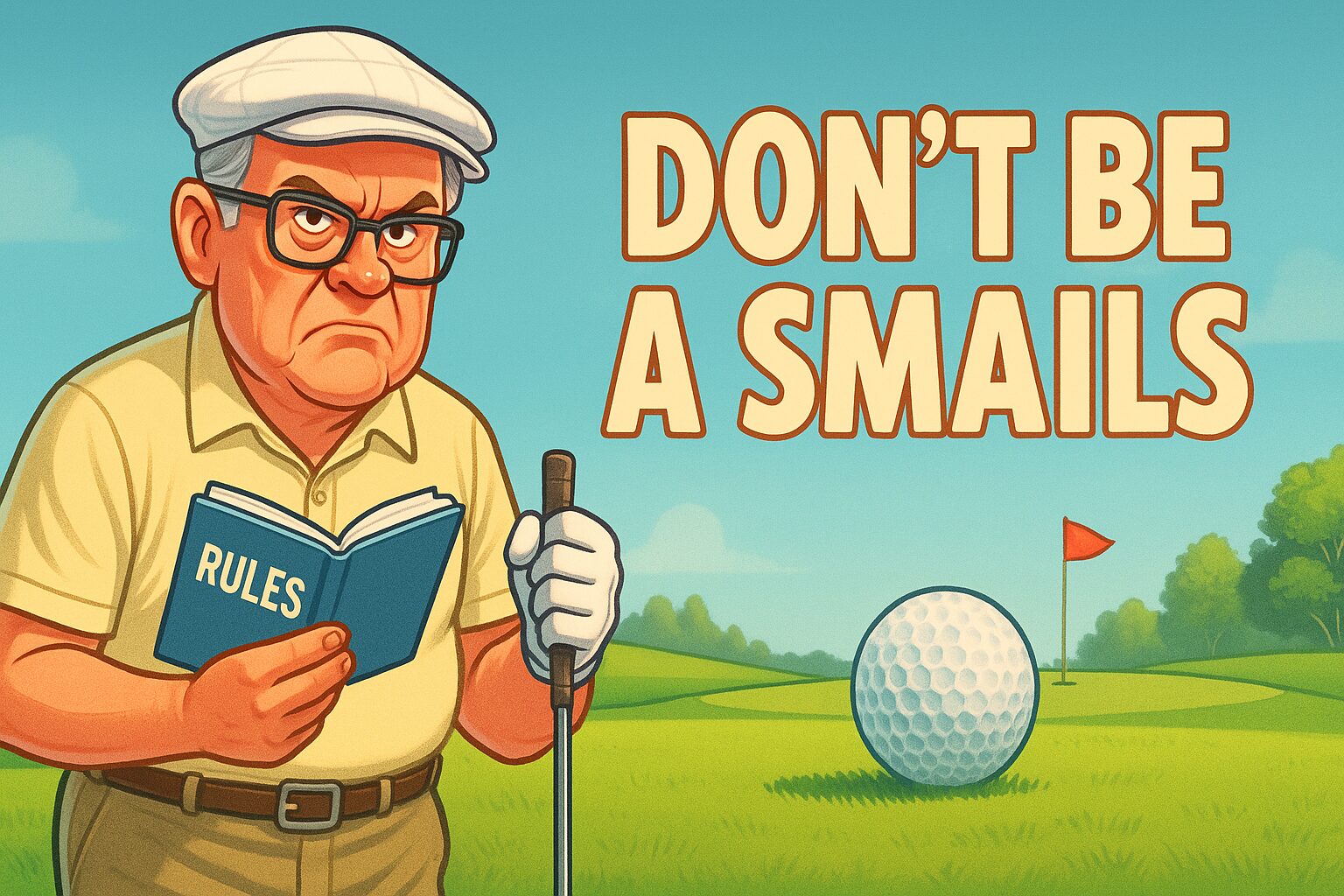Blog
Struggling with Focus? Here’s How a Pre-Shot Routine Can Transform Your Golf Game
Struggling to focus on the course? A solid pre-shot routine boosts confidence, sharpens your mind, and leads to better swings and lower scores. Here’s how to build your own.

There’s nothing more frustrating than flushing it on the range, only to crumble once you step onto the first tee. If that sounds like you, you’re not alone—and your swing might not be the issue.
More often than not, what’s missing is mental consistency.
The truth is, your brain craves structure, especially when tension is high and pressure builds. That’s where a pre-shot routine comes in—a simple, repeatable sequence that calms your mind, centers your focus, and allows your body to do what it already knows how to do.
Whether you’re lining up a tee shot or facing a tricky downhill chip, a reliable pre-shot routine gives you the confidence and clarity you need to execute.
What Is a Pre-Shot Routine And Why It Matters?
A pre-shot routine is a structured sequence of actions and thoughts you go through before every shot. It’s your mental warm-up.
Think of it like an autopilot system—by triggering familiar steps before each swing, you reduce overthinking and let muscle memory take over.
“The brain doesn’t like surprises. Routines give us the freedom to perform without hesitation.”
— Dr. Bob Rotella, Golf Sports Psychologist
Tour pros swear by it. Watch Rory, Tiger, Nelly Korda—you’ll notice they do almost the exact same thing before every shot. It’s no accident.
A great pre-shot routine:
- Calms nerves
- Builds rhythm
- Improves focus
- Creates consistency under pressure
The 5 Key Steps to a Simple, Effective Pre-Shot Routine
No two routines are exactly alike, but the best ones include these core elements:
1. Pick a Target and Commit
Before anything else—decide what you’re aiming at. Pick a small, specific target (like a tree behind the green, not just “the fairway”).
Then—and this is key—commit to it. No second-guessing. You’ve got one shot. Choose it and trust it.
2. Visualize the Shot
Take a moment to see the shot you want to hit in your mind’s eye. High draw? Low spinner? Picture it from start to finish. This connects your brain and body.
Visualization is a powerful cue to bring your focus away from distractions and into the present.
3. Feel the Swing
Take one or two slow, deliberate practice swings. Match the feel to your intended shot. Don’t just go through the motions—feel the tempo, balance, and rhythm.
This tells your muscles what they’re about to do.
4. Step In with Purpose
This is the physical transition into go-mode. Walk up, align your clubface to the target, set your feet, and glance once more at the target.
At this point, you’re no longer thinking—you’re executing.
5. Pull the Trigger Without Delay
Once you’re set, don’t freeze. Take a breath and go. Overthinking kills more good swings than bad mechanics ever will.
From setup to swing, this part should take 5–10 seconds max.
Common Mistakes to Avoid
- Overcomplicating the routine: Keep it short. 15–20 seconds total is plenty.
- Changing it mid-round: Consistency is the key. Stick with your process—even if you’re struggling.
- Focusing on outcome: Once you’ve committed, let the result go. Focus only on the execution.
Pro Tip – Practice It Like a Skill
Here’s where most amateurs drop the ball: they practice swings, not routines.
Next time you hit the range, practice your full routine on every shot. Visualize, commit, breathe, swing. You’ll not only groove your motion—you’ll make your process automatic.
Build One That Fits You
Here’s a simple example you can adapt:
- Pick your target
- Visualize the ball flight
- Take 1 practice swing
- Step in, align clubface, set feet
- Glance at target
- Breathe and swing
It should feel natural, not robotic. Once it does, you’ve got something you can rely on in the clutch.
The difference between a great shot and a chunked one often happens before the club ever moves. With a consistent pre-shot routine, you’ll play with more confidence, stay focused under pressure, and hit more solid shots—even when nerves kick in.
Want to play better golf without overhauling your swing? Start with your routine.
And when you’re ready for more real-world, no-BS golf tips that make you better—come back to ClickItGolf.com.
@clickitgolfofficial Struggling with focus on the golf course? Discover how a simple pre-shot routine can transform your game, boost your confidence, and improve your consistency. Learn the key steps to developing your own routine and take your golf to the next level! #GolfTips #PreShotRoutine #GolfImprovement #MentalGame #GolfConsistency #ClickitGolf #GolfAdvice #GolfPerformance ♬ original sound – Clickit Golf
Blog
The Unofficial Rules of Golf: A Gentleman’s Guide to Not Being Judge Smails
The official rulebook is thicker than a dictionary and twice as boring. Let’s talk about the rules that really matter on the course: how to have fun, respect the game, and not be a stick-in-the-mud. Hint: It involves less plaid and more cosmic harmony.

You’ve seen him. I’ve seen him. The guy who quotes the USGA rulebook like it’s scripture. He’ll happily tell you your ball moved a quarter of an inch when you addressed it, costing you a penalty stroke. He’s got a plumb bob for a three-foot putt and the personality of a rake. He is, in spirit, Judge Smails. And let’s be honest, nobody wants to be Judge Smails.
The real game of golf, the one that keeps us coming back, isn’t played by those rules. It’s played by a higher law. An unwritten code of conduct that’s all about flow, friendship, and the pursuit of that one perfect shot. It’s a gentleman’s agreement with the universe.
So, let’s talk about the rules that actually matter.
1. The Cosmic Readjustment (aka The Mulligan). Your first tee shot is a mess. It goes sideways into the woods where the gophers play. The Smails of the world would tell you to take a penalty and hack it out. I say the universe is just getting warmed up. The “breakfast ball” isn’t cheating; it’s a course correction. It’s an agreement among friends that a round of golf shouldn’t be ruined before it even begins. Take another. The Dalai Lama would want you to.
2. The Art of Flow (aka Pace of Play). This isn’t about rushing. Rushing is a fool’s game. This is about flow. It’s about being ready to hit when it’s your turn. It’s about watching your friend’s shot so you can help them find it. It’s about moving with a purpose, not like you’re searching for your car keys in a dark parking lot. Don’t be the anchor that drags the whole group down. See the line, hit the ball, walk on. Nanananana.
3. The Circle of Friendship (aka Gimmes). Is the putt inside the leather? Good enough. Pick it up. Life is too short to watch your buddies sweat over an 18-inch putt for a double bogey. A gimme isn’t just a time-saver; it’s a gesture of goodwill. It says, “I trust you, you trust me, and neither of us needs the anxiety of missing this tiny putt.” It’s good for the karma, and even better for the pace of play.
4. The Final Verdict (aka The 19th Hole). The most important rule is this: no matter what happened out there, you shake hands on the 18th green and settle things over a cold drink at the 19th. The guy who shot an 82 and the guy who shot a 102 are equals in the clubhouse. The stories get better, the putts get longer, and the bad shots fade away. This is where the real game is won.
So, forget about the fine print. Focus on the feeling. Be a good playing partner, enjoy the walk, and don’t be a Smails. You’ll find your score starts to take care of itself.
Did this speak to your soul? Pass it along to your foursome to make sure everyone is on the same page. For more deep thoughts from the fairway, be sure to follow us on social media. It’s the right thing to do.
Blog
When Golf Gadgets Fail: Navigating Common Tech Mishaps on the Golf Course
A Look at What Happens When Modern Golf Gadgets Go Wrong

Imagine this: you’re on the golf course, teeing off on a beautiful, sunny day. With the help of your trusty golf gadget, you’re confident you’ll hit a birdie or even an eagle. But just when you’re about to swing, your gadget malfunctions. Suddenly, your perfect game is thrown into chaos. Welcome to the world of technology fails, where even the most advanced golf devices can sometimes let you down. In this article, we’ll explore some common tech fails and provide some tips on how to handle them.
When Golf Gadgets Let You Down
Modern golf devices, from smart clubs to digital scorecards to GPS-enabled watches, have revolutionized the game. They provide golfers with real-time data, helping them refine their swing, choose the right club, and navigate the course. But what happens when these devices fail?
Unreliable Data
One of the most common golf gadget fails is inaccurate or unreliable data. GPS devices might show the wrong distance to the pin, swing analyzers might give incorrect feedback, and digital scorecards might miscalculate your score. This can be frustrating, especially when you’re relying on these devices to improve your game.
Battery Drain
Another common issue is battery drain. Many golf gadgets require a significant amount of power, and if they’re not properly charged, they can die in the middle of a game. This leaves you without the data you need to make informed decisions on the course.
Technical Glitches and Malfunctions
Sometimes, golf devices just stop working. They might freeze, crash, or refuse to turn on. These technical glitches can be caused by software bugs, hardware issues, or even user error.
Preventing Golf Gadget Fails
While it’s impossible to prevent all golf gadget fails, there are steps you can take to minimize the risk.
Regular Updates
Keeping your devices updated can help prevent software-related issues. Regular updates often include bug fixes and improvements that can enhance the performance of your device.
Proper Charging
To avoid battery-related problems, make sure to fully charge your devices before hitting the course. Some devices also have power-saving modes that can help extend battery life.
Backup Plan
It’s always a good idea to have a backup plan in case your devices fail. This might mean carrying a traditional scorecard or having a basic understanding of how to calculate distances without a GPS.
When Gadgets Go Wrong: The Bottom Line
Golf gadgets are a fantastic tool for any golfer looking to improve their game. However, like all technology, they can sometimes fail. By understanding the common issues and how to prevent them, you can ensure you’re prepared for any tech-related hiccups on the course. After all, golf is about more than just the gadgets—it’s about the experience, the skill, and the love of the game.
Blog
Mastering the Art of Overcoming Choking under Pressure: Strategies for Peak Performance
Learn the skills needed to stay calm under pressure.

Imagine this: you’ve spent countless hours honing your skills, preparing for that big presentation, important meeting, or decisive sports match. But, when the big moment arrives, instead of performing at your best, your mind goes blank, your hands shake, and you flub it. The dreaded phenomenon of ‘choking under pressure’ can strike anyone, from the seasoned professional to the eager amateur. So, how do you overcome this common mental roadblock? In this article, we’ll explore effective strategies to help you conquer the fear of choking and elevate your performance under pressure.
Understanding Choking under Pressure
Before you can overcome choking, it’s crucial to understand what it is. Psychologists define choking as performing below your ability under pressure. This can be due to heightened anxiety, overthinking, or fear of failure. The irony is, the more you care about performing well, the more likely you are to choke.
Why Do We Choke?
Several factors contribute to choking under pressure. Here are a few:
-
- Fear of Negative Evaluation: The fear of being judged negatively by others can cause significant anxiety, leading to poor performance.
- High Stakes: When the stakes are high, and the outcome is important, the pressure can cause you to underperform.
- Overthinking: The tendency to scrutinize every detail in high-pressure situations can divert your focus from the task at hand.
Strategies to Overcome Choking
Now that we understand why we choke, let’s delve into strategies to prevent it:
- Practice Under Pressure: Simulate high-pressure situations during practice to acclimate yourself to the stress.
- Focus on the Process, Not the Outcome: Concentrating on the process helps keep your mind focused and prevents overthinking.
- Use Positive Affirmations: Positive self-talk can boost your confidence and reduce anxiety.
Case Studies: Athletes Overcoming Choking
Many successful athletes have overcome choking to deliver exceptional performances. Take Michael Jordan, for example. He often missed crucial shots early in his career but used these failures to fuel his determination and eventually became renowned for his clutch performances. Similarly, Serena Williams has bounced back from choking in several matches to claim victory, demonstrating her mental toughness.
Choking under pressure is a common phenomenon, but with the right strategies, it can be overcome. By understanding the causes of choking and implementing techniques like practicing under pressure, focusing on the process, and using positive affirmations, you can learn to perform at your best when it counts the most. Remember, it’s not about never feeling pressure; it’s about learning how to thrive within it.
As Michael Jordan said, “I’ve missed more than 9,000 shots in my career. I’ve lost almost 300 games. 26 times, I’ve been trusted to take the game-winning shot and missed. I’ve failed over and over and over again in my life. And that is why I succeed.” So, next time you face a high-pressure situation, think of it as an opportunity to grow, not a threat to be feared.
If you’ve enjoyed this article and want to learn more about mastering your mental game, subscribe to our newsletter for more tips and strategies. Or, if you’re ready to take your mental toughness to the next level, check out our other articles designed to help you conquer pressure and perform at your peak.
-

 Product Review6 years ago
Product Review6 years agoThe Perfect Practice Putting Mat Review by Jason Tenzer
-

 Blog4 years ago
Blog4 years agoLoophole Rule Offers PGA Tour Pros a Mulligan
-

 Blog4 years ago
Blog4 years ago2021 Buyer’s Guide: The Top 10 Value Golf Balls For Distance & Feel
-

 Blog5 years ago
Blog5 years agoGolf Marriage Counselor
-

 Product Review6 years ago
Product Review6 years agoTHE ADJUSTABLE IRONS: WALKING STICKS GOLF CLUBS
-

 Blog6 years ago
Blog6 years ago9 Biggest Chokes Of The Past Decade
-

 Blog4 years ago
Blog4 years agoWhat Your Golf Clubs Say About You
-

 Equipment6 years ago
Equipment6 years agoOHK Sports Interview by Jason Tenzer































